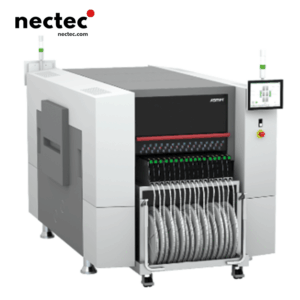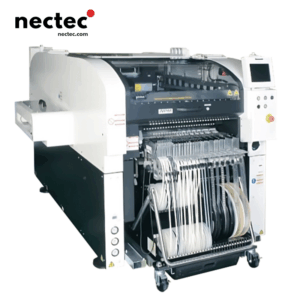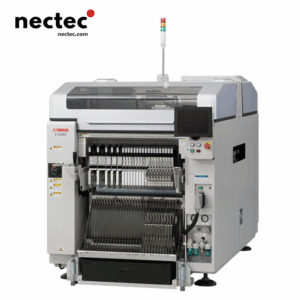The manufacturing industry is evolving at an unprecedented pace, with technological innovations paving the way for more efficient and precise production processes. Among these advancements, pick and place machines have emerged as critical components, streamlining operations in various sectors. The University of Florida (UF) stands out as a leading institution that is pushing the boundaries of what these machines can achieve. In this article, we will delve into the University of Florida’s contributions to pick and place technology, examining their impact on manufacturing and beyond.
了解取放设备
Pick and place machines are automated systems used for handling, moving, and positioning components in manufacturing processes. These machines are essential in assembly lines, capable of increasing productivity and reducing human error. Traditionally, pick and place systems relied on simple robotic arms equipped with suction cups or grippers to perform tasks. However, technological advancements have led to the development of more sophisticated systems that incorporate artificial intelligence (AI) and machine learning (ML).
University of Florida’s Research Initiatives
The University of Florida has been at the forefront of researching and developing innovative pick and place solutions. With a dedicated team of engineers, scientists, and researchers, UF has explored numerous avenues to enhance the efficiency of these machines. One of their notable projects involves the integration of computer vision technology, enabling machines to accurately identify and manipulate objects of varying shapes and sizes.
Researchers at UF are also working on adaptive algorithms that allow pick and place machines to learn from their environment and improve their performance over time. This approach not only enhances the machine’s accuracy but also reduces downtime and maintenance needs. By leveraging cutting-edge technology, UF’s research initiatives are setting new standards in the industry.
在各行各业的应用
The implications of UF’s advancements in pick and place technology are vast, influencing a range of industries from electronics to food processing. In the electronics sector, for example, the precision and speed of these machines have revolutionized the assembly of circuit boards, significantly increasing production rates while maintaining quality standards.
In the food industry, pick and place machines play a crucial role in packaging and sorting operations. Their ability to handle fragile items with care ensures that products reach consumers in pristine condition. Additionally, hospitals and laboratories are adopting these innovations for sorting and placing medical supplies, enhancing efficiency and safety in critical environments.
Collaboration with Industry Leaders
The University of Florida’s commitment to innovation extends beyond academia; they actively collaborate with industry leaders to bring their research to market. Partnerships with companies in the robotics and automation sectors have sparked numerous projects, aimed at optimizing pick and place systems for real-world applications.
These collaborations provide students and researchers with valuable insights into the challenges faced by manufacturers and allow for the practical application of theoretical knowledge. By bridging the gap between research and industry, UF is ensuring that their innovations meet the evolving needs of the market.
教育和培训的作用
Education plays a pivotal role in advancing pick and place technology. The University of Florida offers comprehensive programs designed to equip students with the skills necessary to thrive in this rapidly changing field. Students engage in hands-on training with state-of-the-art equipment, preparing them for careers in engineering, robotics, and automation.
UF also hosts workshops and seminars featuring industry experts, fostering an environment of continuous learning and innovation. This commitment to education not only benefits students but also contributes to a skilled workforce capable of driving the future of manufacturing.
对劳动力动态的影响
As pick and place machines become increasingly integrated into manufacturing processes, workforce dynamics are changing. While the initial concern may be job displacement, the reality is more nuanced. These machines are serving as valuable tools that augment human capabilities rather than replace them. With the rise of automation, the demand for skilled operators and engineers capable of designing, maintaining, and programming these systems is growing.
The University of Florida recognizes this shift and is adapting its curricula accordingly. By preparing students for the future job market, UF is playing a crucial role in ensuring that the workforce can leverage technological advancements to enhance productivity and efficiency.
取放技术的未来趋势
The future of pick and place machines is bright, with ongoing research and development promising exciting advancements. One trend gaining traction is the use of collaborative robots, or cobots, which can work alongside humans safely and efficiently. This integration signifies a shift toward more adaptable manufacturing environments where humans and machines complement each other’s strengths.
Additionally, advancements in materials science are paving the way for lighter and more durable components in pick and place systems. This shift will not only improve the performance and longevity of the machines but also reduce energy consumption, aligning with global efforts toward sustainability in manufacturing.
The Importance of Sustainability
Sustainability is becoming a paramount concern in the manufacturing sector. The University of Florida is actively involved in research aimed at developing eco-friendly pick and place solutions. By focusing on energy efficiency and minimizing waste, UF’s innovations contribute to a more sustainable manufacturing process, benefiting both businesses and the environment.
Moreover, the integration of renewable energy sources into the operation of these machines is being explored, further reducing the carbon footprint associated with traditional manufacturing processes.
结束语
As the manufacturing landscape continues to transform, the University of Florida remains at the cutting edge of innovations in pick and place machine technology. Through research, collaboration with industry partners, and a commitment to education, UF is shaping the future of manufacturing. The ongoing evolution of these machines will undoubtedly lead to more efficient, precise, and sustainable production processes, solidifying their place as essential tools in the modern manufacturing ecosystem.









